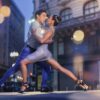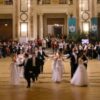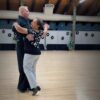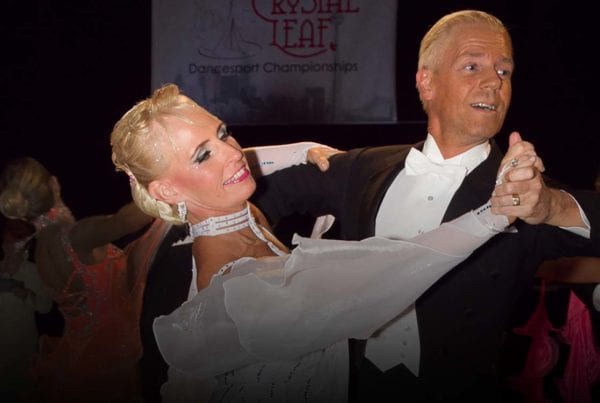To dance the Paso Doble well, one must embrace the character of the matador in the arena. And a key ingredient in reflecting this character, one missing in far too many Paso routines these days, is that of stillness.
The Paso Doble is based on the symbolism of the bullfight. You don’t need to ever see a real bullfight, nor want to, to understand some of the main elements of this classic battle. The matador’s role is to demonstrate bravery. He has an 800lb bull rushing towards him while he stands his ground, unflinching in the face of the attack, waiting and ready to swing his cape to the side at the right moment. He doesn’t rush around the arena. He isn’t constantly on the move! Even the cape is not continuously in motion but flows softly and smoothly, at times not moving at all, then sweeps around in a flurry of activity and once again there is stillness.
In fact, many of the technical aspects of Paso Doble come from this same foundation. The distinctive walk is a great reflection of the arrogance of the matador, stepping forward with boldness, the heel striking the ground first and the center mass moving firmly forward. The posture of Paso, with the curved shape always stretching obliquely in a diagonal direction away from the bull’s horns. There is the determined focus of the eyes, because a matador never takes his eyes away from the bull. The curved sweep of the arms as he swings the cape around. The lady’s actions, while also matching these technical qualities, are soft and flowing to emulate the fabric of the cape. All of these qualities work together to bring us into this imaginary world of the bullfight arena.
Unfortunately, Paso Doble performances are increasingly lacking many of these ingredients. What I see missing most of all is the quality of stillness. Routines are often just 100 seconds of frantic activity, far removed in character from the story they are attempting to present.
Even a social dance Paso Doble using only basic steps can be powerful, dramatic and even unforgettable by integrating these aspects of the character of the dance into the movements.
We are able to see some of this character in some of the best professional showcase performances, so here are a few examples to help inspire you.
Riccardo Cocchi & Yulia Zagoruychenko
A great showdance performance from a couple of years ago shows great elements of stillness and caping actions.
Michal Malitowski & Joanna Leunis
Although Joanna is known as the world master of fast movement, she uses that speed in the most skillful way in this performance that never loses sight of the power of stillness.
Slavik Kryklyvyy & Karina Smirnoff
This showcase takes stillness to a whole new level, with nearly half the dance performed as a solo to illustrate the loneliness of the matador in the arena. Even after Karina joins him on the floor, the couple never loses sight of this key element of Paso Doble until the dance eventually fuses into Samba.












